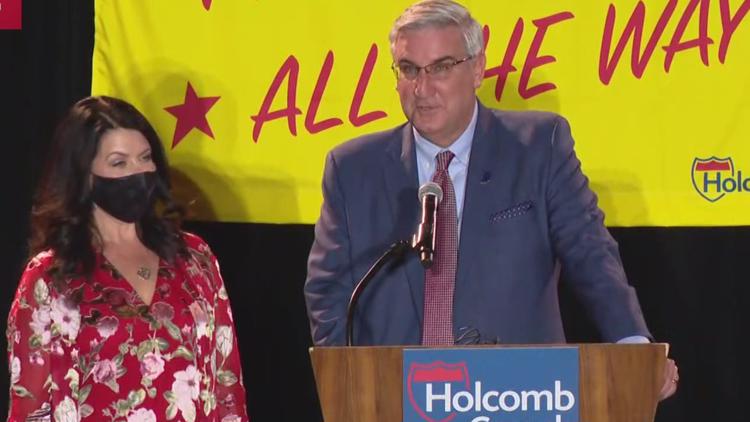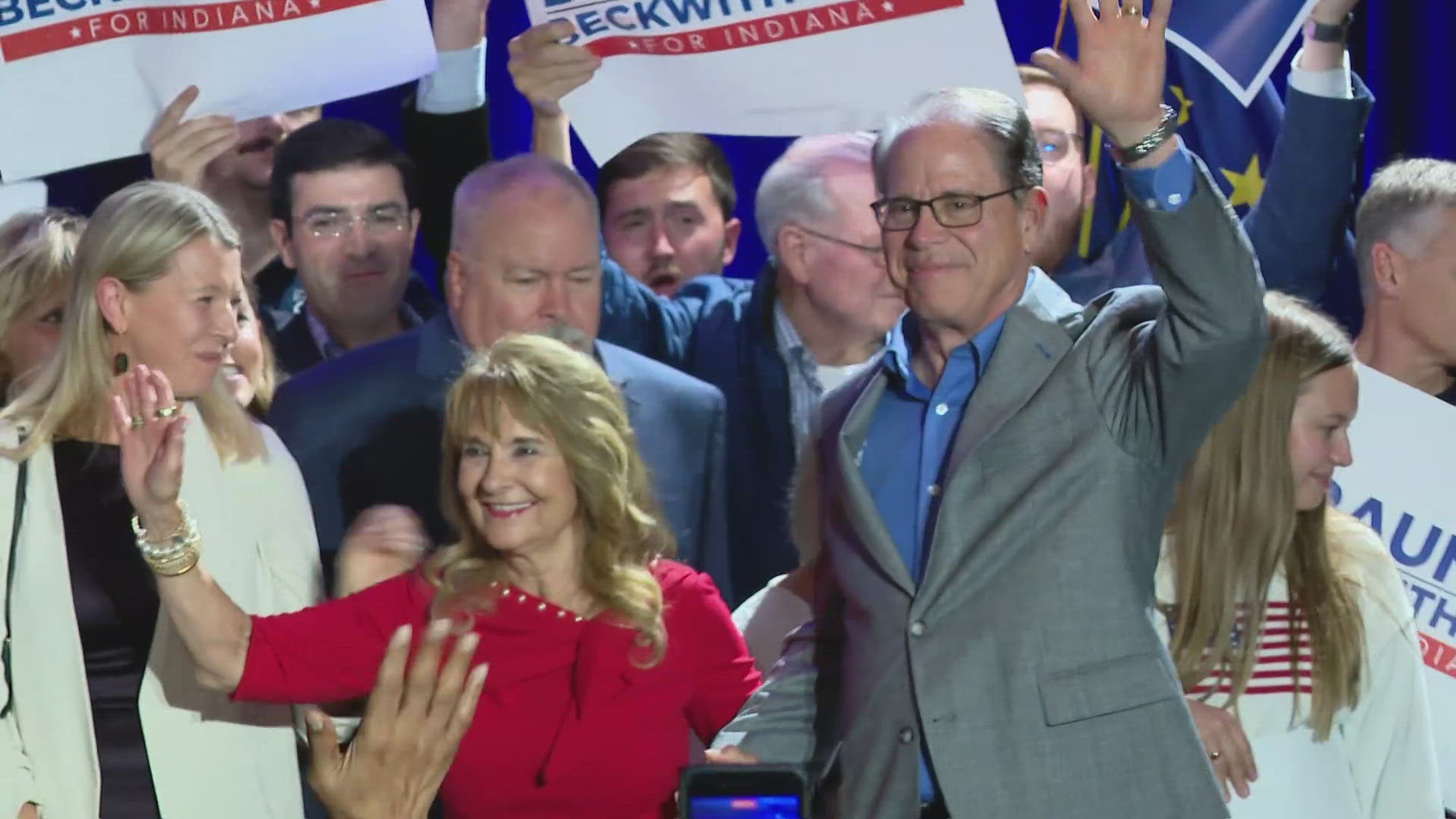INDIANAPOLIS — Gov. Eric Holcomb may equaled a modern plurality record with his 57-32% win over Democrat Woody Myers and Libertarian Donald Rainwater, who notched 15% (with 96% of precincts counted).
In 1992, Democrat Gov. Evan Bayh defeated Attorney General Linley Pearson by a 25.1% margin, though Holcomb’s 1.576 million votes bests Bayh’s 1.382 million votes. While Bayh had to deal with a split 50/50 House and a Republican Senate following his landslide, Gov. Holcomb enters his second term with super majorities in the House and Senate, the GOP holding every Statehouse constitutional office, a 9-2 advantage in the congressional delegation, 71 out of 115 mayors, and north of 80% of county courthouse offices and above 90% of county commissioners.
“I couldn’t be more grateful that our neighbors, families, friends, and Hoosiers from all across Indiana put their trust in us to lead our great state for another four years,” Holcomb said a couple of hours after he was declared the winner just after 7 p.m. Tuesday. “There’s no beating around the bush; COVID-19 is an unprecedented challenge that slowed us down. But Hoosiers are the most resilient people in the world. We’re getting back on track, and our victory today is the first step toward getting our state back to setting records.”
“We’ve reached the apex, setting a high water mark,” said Indiana Republican Chairman Kyle Hupfer, who served as Holcomb’s campaign manager. “When you have 70 state representatives, 71 mayors, I don’t know where you go from here.”
If you happened to be 5th Congressional District Democrat nominee Christina Hale, or State Reps. Terry Goodin, Melanie Wright, Lisa Beck, Chris Chyung, or Ross Deal, you know the impacts of what became the MIA Woody Myers campaign. All lost. By contrast, the down ballot impacts were limited in 2012 when Mike Pence defeated Democrat John Gregg 49.5% to 46.6%, and again in 2016 with Holcomb defeated Gregg 51.4% to 45.5%.
Myers declared his candidacy for governor mid-summer 2019, but by year’s end, reported just $14,000 cash on hand, compared to more than $7 million for Holcomb. At the end of the third quarter as the governor’s race hit the homestretch, Myers had just $80,000 cash on hand. His campaign was so feeble that it managed to run its first TV ad on the final Friday before the election, whereas the Libertarian Rainwater was running TV and radio for the final three weeks.
Not only were down ballot Democrats missing any kind of coordinated messaging, Myers absence left a gaping hole. Many Hoosiers voted for President Trump, Holcomb, and then, well hell, might as well vote a straight Republican ticket.
Compare that to the GOP machine created by Holcomb (a former Republican chairman) and Hupfer.
“We’ve certainly felt all along we have one of the best developed ground game infrastructure of data, staff, volunteer and methodology and may be one of the best in the country,” Hupfer said. “I think it paid dividends. The other piece that pays dividends is teamwork. Over past four years, since Gov. Holcomb was elected, we have focused on a seamless effort, party, House Republican Campaign Committee, Senate Majority Campaign Committee, and federal candidates. We ran one program and had people invest in it. It plays out when in this cycle we were concerned and put extra efforts in the 5th CD and down-ballot races there, it played out with HRCC and SMCC. It helped us and them.”
Hale’s 5th CD race against Republican Victoria Spartz attracted national attention as a potential Democratic pickup in a ruby red district. Not only did Hupfer and the GOP coordinate voter outreach (door knocking, phone calls, digital messaging), he had the luxury of targeting funds into the 5th CD and down ballot legislative races. “We invested an additional $400,000 in state House races, Todd Rokita’s race (for attorney general), in the 5th Congressional District,” he said.
Hale would lose to Spartz by a 50-46% margin, and the Democrats projected advantage with suburban, college-educated women was negated. Hale ended up trailing Democratic presidential nominee Joe Biden by 2% in Hamilton County, while Spartz over-performed President Trump by 1%.
Indiana Democrats are barely a major party. Its gubernatorial-level bench is bare with Hale’s loss as well as the 1st CD primary loss by Hammond Mayor Thomas McDermott Jr., though I reminded him that past Hoosier pols like John Brademas, Phil Sharp, Richard Lugar and Mike Pence overcame early losses to carve illustrious careers. The difference is they all had functional political parties in the wings.
Beau Bayh, the son Evan Bayh, campaigned with Myers in October, setting speculation that he might be the third generation of the dynastic Hoosier family to attempt a Democratic revival. But at age 24, it would be another six years before he met the gubernatorial age requirement of being 30 years old when being sworn in.
Who steps in to the Democratic void is unknown.
Meanwhile, I asked Hupfer if his next act would be to run for governor in 2024 in a Republican field likely to include Lt. Gov. Suzanne Crouch, Attorney General-elect Todd Rokita, and, perhaps, U.S. Reps. Jim Banks, Trey Hollingsworth or Greg Pence.
“Way too early,” he responded. “I’m not going to take anything off the table. We’re still basking in last night. We’ll begin to focus on 2022.”
The columnist is publisher of Howey Politics Indiana at www.howeypolitics.com. Find Howey on Facebook and Twitter @hwypol.



